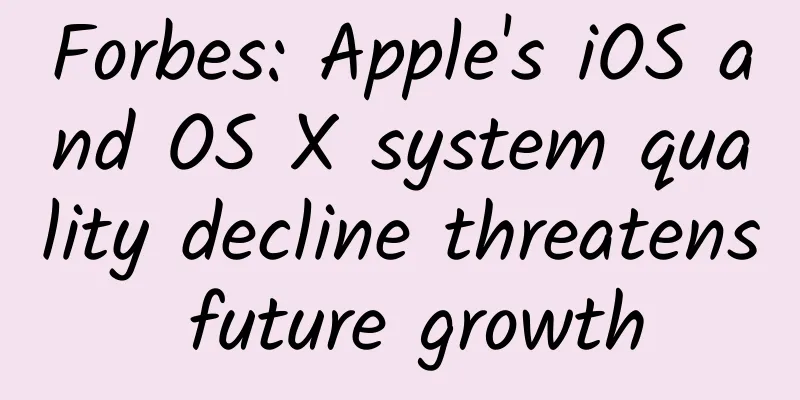Running x86 apps is futile! Win10 mobile is a complete tragedy

|
On December 8, at the Windows Hardware Engineering Industry Innovation Summit WinHEC held in Shenzhen, China, Microsoft announced a piece of news that excited all Windows Phone fans. Microsoft said it would work with Qualcomm to enable all future ARM-based mobile devices to run the Windows 10 operating system, and to run Win32 desktop applications based on the x86 architecture and universal Windows applications, including Adobe Photoshop, Microsoft Office, and popular Windows games. This essentially means that the powerful features that were once talked about on desktop operating systems can now be realized on Windows smartphones. It goes without saying that this will be a milestone achievement for Windows platform phones. It is not to say that it is the dream of fans for many years, but at least when it is truly realized, it will be a level higher than the current Windows Phone and Windows 10 Mobile devices. But can this new technology really save Windows smartphones? Personally, it may not have much effect, or make any changes in the overall situation. Even the launch of the Surface phone is unlikely to save the market. With the current global market share of Windows phones being less than 0.5%, it is difficult for the Windows phone platform to recover in the short or long term, at least within three to five years. Lack of mobile apps is a big letdown First, we have to step back and face the problem of the Windows mobile platform. I believe that most users of Windows Phone and Windows 10 Mobile devices will agree that the platform simply does not have a good application ecosystem, especially compared with the iOS and Android camps. Applications are the essential needs of mobile devices, and the lack of applications alone is enough to make a super phone do nothing. In contrast, the ecosystems of other competitors are becoming more and more complete, and even if there is user loss, it is only between iOS and Android platforms. Users who temporarily switch to Windows Phone will not choose the lineup of Windows Phones, which lacks an application ecosystem, as they believe that the lack of applications directly undermines the overall experience of smartphones. Given the current poor situation of Microsoft's Windows mobile platform, it is no longer as simple as releasing one or two flagship phones to solve the problem. Microsoft has more or less hinted that the Windows 10 Mobile platform seems to be a matter between Microsoft and enterprise users, not for mass consumers. Take the HP Elite X3 as an example. This machine is already the most powerful Windows phone to date, but HP clearly stated that this is a device launched for enterprises and promoted that it can be used in productivity. Although designed for enterprises, enterprise users are also consumers Windows 10 phones are powerful enough to replace PCs for enterprise users one day, so business people want to carry mobile computers wherever they go. However, the lack of applications is still a major frustration for both enterprises and ordinary consumers. Because when not working, those users in enterprises are equivalent to ordinary consumers, and they simply cannot find daily applications that they are satisfied with on their mobile phones. Specifically, business people use Windows 10 Mobile devices, and they can work in the office through the enhanced Continuum mode and run x86 applications relatively comfortably. However, when they remove the device from the base, the device is just an ordinary mobile phone. It is conceivable that as an ordinary person after work, you will also use applications to order food, shop, buy tickets or chat with friends and relatives, but you will find that all this is still so difficult because Microsoft has not solved this major problem at all. Many people may say, isn't Windows Phone able to run a full operating system at that time? Since it can run x86 applications on the desktop, how can it be said that there are no applications? This is not the case, because in mobile life, there is no choice but to silently endure the pain caused by the lack of mobile applications. Billions of iOS and Android users are enough to prove why they need applications designed specifically for mobile devices. x86 applications do not represent or stimulate the growth of mobile applications Previously, a lot of win32 applications used on the desktop only exist in Continuum mode and are not suitable for use on a small mobile phone screen. Such x86 applications need to be operated by mouse or keyboard, and are not optimized for touch. Therefore, Microsoft has thought of everything, and the next step is to highly restore the office scenes that business people are most familiar with, which must be one of the important promotional selling points. Of course, Continuum itself has UWP universal applications, which use unified code from the beginning of development, support touch operation, and can automatically adjust the interface size to adapt to various screens according to the size of the user's device, ensuring the most suitable, fastest, smoothest and familiar operation experience on each device. Simply put, universal applications have both mobile and desktop versions, one program is suitable for all devices, and users only need to install it once in the Windows Store. But then again, how many UWP universal apps are there in Windows Store? This is a big plan that Microsoft has been planning since the Windows 8 era, but so far, due to many factors such as not meeting the interests of developers, the number of UWP apps is significantly lower than expected, and there are only a few of them. A large number of commonly used desktop apps have not been converted into universal apps. Therefore, it is hard to believe that after mobile phones can run x86 apps, the application of mobile platforms will flourish. In the end, is there no hope for Windows phones? According to all the aspects mentioned above, it only shows that the poor mobile program ecosystem is not conducive to Windows phones to expand their market share. Even if the function of x86 applications running on mobile phones is released, everything will not change dramatically overnight, because the lack of mobile applications makes expanding market share just a dream in the short term. However, since Microsoft has expressed that it still loves Windows phones, is more enthusiastic about software improvements, and pays more attention to the development of the ecosystem, it must have anticipated all unfavorable factors. Therefore, last month, Microsoft CEO Satya Nadella said in an interview that Microsoft does not want future Windows phones to be devices centered on ordinary consumers like Android and iPhone. "We hope that the driving force for progress is not just to envy what others already have," but to have unique innovative features that are consistent with its new strategy. He also stressed that Microsoft's expected Windows phone will be the "ultimate mobile device." He explained that he believes that the ultimate mobile device "should be able to provide real value and differentiation, even if it is "no longer defined as a market share leader, because the device that only focuses on a user group that needs a series of specific functions may be very small today, but we can do it very well." In this way, Microsoft's boss is not worried about the failure of the Windows phone business, and admits that Microsoft phones are trying to go in different directions instead of blindly following, otherwise they would not have abolished the Project Astoria project that runs Android applications. We can perhaps say that the next step for Windows on ARM may be to prepare for the "enhanced Continuum mode" of Windows phones, enabling them to run x86 applications on desktop PCs, which is already a good upgrade. All in all, Microsoft's new announcement is really exciting. Even if it is not for all consumers, it still has high-end prospects and a truly innovative spirit. It's just that the long wait is frustrating. As a winner of Toutiao's Qingyun Plan and Baijiahao's Bai+ Plan, the 2019 Baidu Digital Author of the Year, the Baijiahao's Most Popular Author in the Technology Field, the 2019 Sogou Technology and Culture Author, and the 2021 Baijiahao Quarterly Influential Creator, he has won many awards, including the 2013 Sohu Best Industry Media Person, the 2015 China New Media Entrepreneurship Competition Beijing Third Place, the 2015 Guangmang Experience Award, the 2015 China New Media Entrepreneurship Competition Finals Third Place, and the 2018 Baidu Dynamic Annual Powerful Celebrity. |
<<: iOS 10.2 update review: more than 100 new Emojis
>>: Accenture: Reshaping business operations with the next generation of artificial intelligence
Recommend
100 essential tips for advertising and marketing
There are many benefits to working in advertising...
Is Baidu bidding easy to do now? How to do Baidu bidding well?
Both large and medium-sized enterprises and some ...
How to advertise in the photography industry?
"Family portrait" is an important sub-i...
Analogous to WeChat, how to compress Apk to the extreme, talk about the 8 steps of Android compression
Introduction As the project continues to iterate,...
How to make a good online event promotion plan?
In marketing psychology, herd mentality, greed fo...
An expelled "planet": What did Pluto offend?
Pluto, as the first Kuiper Belt object detected, ...
Pinduoduo’s operation and promotion logic!
Before, my understanding of Pinduoduo was still a...
It took me 300 million yuan to learn the secrets of information flow copywriting!
I am different from other optimizers because I wo...
How much does it cost to create a home app in Linzhi?
According to industry insiders, mini programs wil...
How many floors of Wenchang Tower are needed for best effect?
Nowadays, we can see many Feng Shui mascots every...
Nokia N9 is not dead: it can boot up three operating systems
As the last champion of Nokia's MeeGo platform...
Samsung thrives on memory chips, how can Chinese manufacturers break through?
Since the second half of last year, the prices of...
Comprehensive plan for Tik Tok short video marketing and promotion in 2019!
Follow the official account " Operation Uncl...
An in-depth review of Durex’s red envelope fission!
The Business Card Mini Program gave out 200,000 r...
Mobvoi launches the "Mobvoi App Store", Android Wear is gaining popularity
On January 25, 2016, Mobvoi held the first "...









